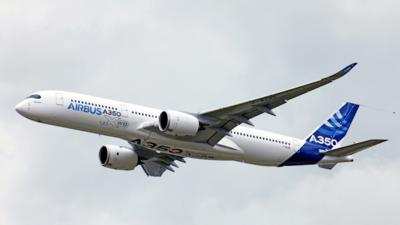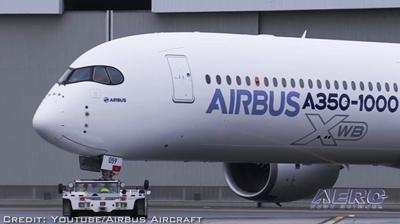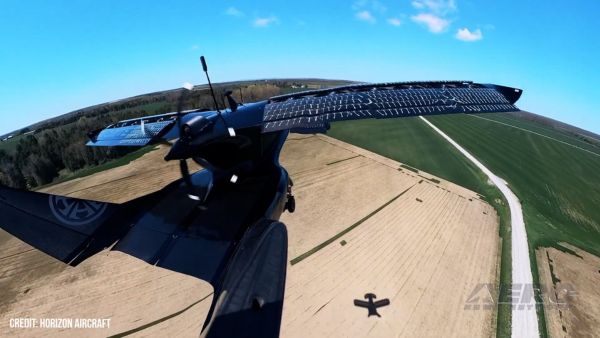Sun, Oct 17, 2021
AD 2021-20-04 Requires Revising The Existing Airplane Flight Manual
The FAA is adopting a new airworthiness directive (AD) for certain Airbus SAS Model A350-941 and -1041 airplanes. This AD was prompted by a report that during flight tests, the opening of the ram air outlet flaps was found to cause a disturbance of the air flow around the ram air turbine (RAT) when the landing gear (L/G) is extended.

This AD requires revising the existing airplane flight manual (AFM) and applicable corresponding operational procedures to provide procedures for all engines failure and L/G gravity extension related to certain software, and installing Airbus temporary quick change (ATQC) V3 for the flight warning system (FWS) software (SW) standard (STD) 6/2.0, as specified in a European Union Aviation Safety Agency (EASA) AD, which is incorporated by reference. The FAA is issuing this AD to address the unsafe condition on these products. This AD is effective November 17, 2021.
Supplementary Information: EASA, which is the Technical Agent for the Member States of the European Union, has issued EASA AD 2021-0061, dated March 5, 2021 (EASA AD 2021-0061) (also referred to as the MCAI), to correct an unsafe condition for certain Airbus SAS Model A350-941 and -1041 airplanes.
The FAA issued a notice of proposed rulemaking (NPRM) to amend 14 CFR part 39 by adding an AD that would apply to certain Airbus SAS Model A350-941 and -1041 airplanes. The NPRM published in the Federal Register on July 14, 2021 (86 FR 37087).

The NPRM was prompted by a report that during flight tests, the opening of the ram air outlet flaps was found to cause a disturbance of the air flow around the RAT when the L/G is extended. The NPRM proposed to require revising the existing AFM and applicable corresponding operational procedures to provide procedures for all engines failure and L/G gravity extension related to certain software, and installing ATQC V3 for the FWS SW STD 6/2.0, as specified in EASA AD 2021-0061.
The FAA is issuing this AD to address a non-negligible effect on the overall performance of the RAT in case of total engine flame out (TEFO) or electrical emergency configuration combined with the auxiliary power unit (APU) running, which could lead to partial or total loss of RAT electrical power generation when the RAT is deployed in an emergency condition with the landing gear extended, and possibly result in reduced control of the airplane. See the MCAI for additional background information.
More News
From 2021: The Inside Skinny On What Being An ANN Oshkosh Stringer Is All About By ANN Senior Stringer Extraordinare, Gene Yarbrough The annual gathering at Oshkosh is a right of p>[...]
Pilot Asked The Mechanic To Go For A Test Flight Around The Airport Traffic Pattern With Him For A Touch-And-Go Landing, And Then A Full-Stop Landing On May 7, 2025, about 1600 eas>[...]
From 2010 (YouTube Edition): Skiles Reflects On His Ring-Side Seat To An Historic Event Jeff Skiles, First Officer of US Airways Flight 1549, "The Miracle on the Hudson," was the g>[...]
“The FAA conducted a comprehensive safety review of the SpaceX Starship Flight 8 mishap and determined that the company has satisfactorily addressed the causes of the mishap,>[...]
Fuel Remaining A phrase used by either pilots or controllers when relating to the fuel remaining on board until actual fuel exhaustion. When transmitting such information in respon>[...]
 Oshkosh Memories: An Aero-News Stringer Perspective
Oshkosh Memories: An Aero-News Stringer Perspective NTSB Prelim: Diamond Aircraft Ind Inc DA 40 NG
NTSB Prelim: Diamond Aircraft Ind Inc DA 40 NG Classic Aero-TV: US Airways Jeff Skiles-Making History and Looking To The Future
Classic Aero-TV: US Airways Jeff Skiles-Making History and Looking To The Future Aero-News: Quote of the Day (05.26.25)
Aero-News: Quote of the Day (05.26.25) ANN's Daily Aero-Term (05.26.25): Fuel Remaining
ANN's Daily Aero-Term (05.26.25): Fuel Remaining




